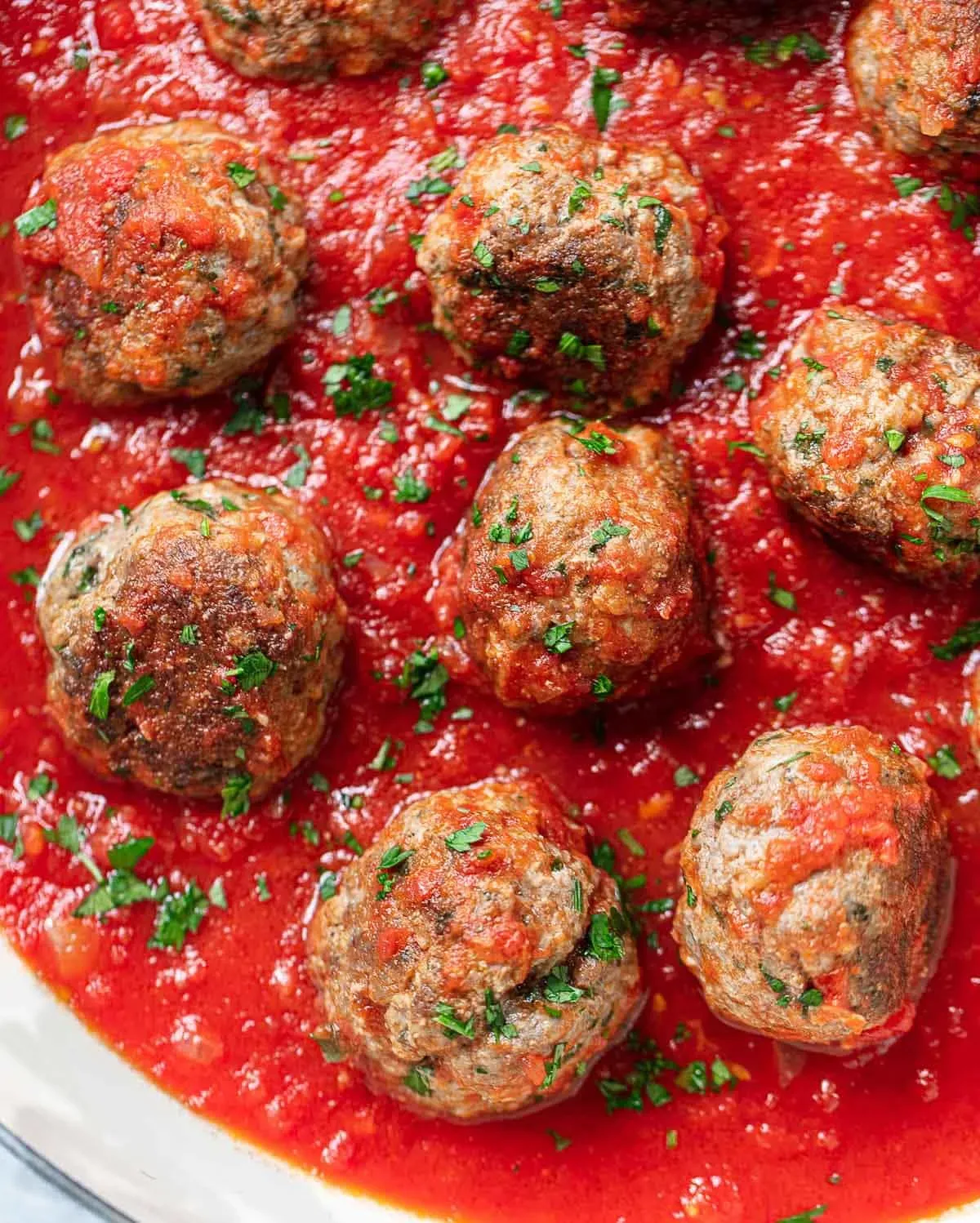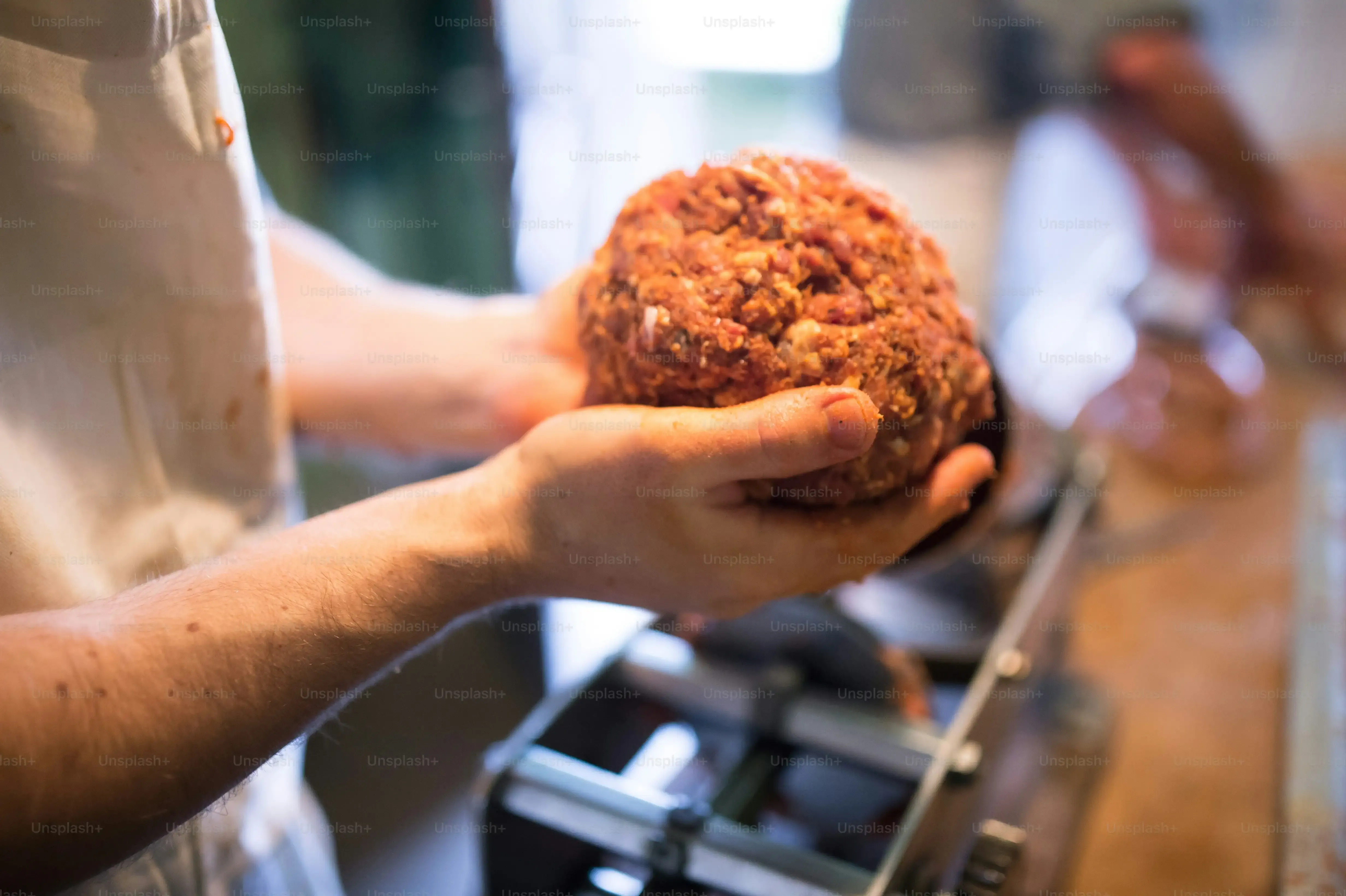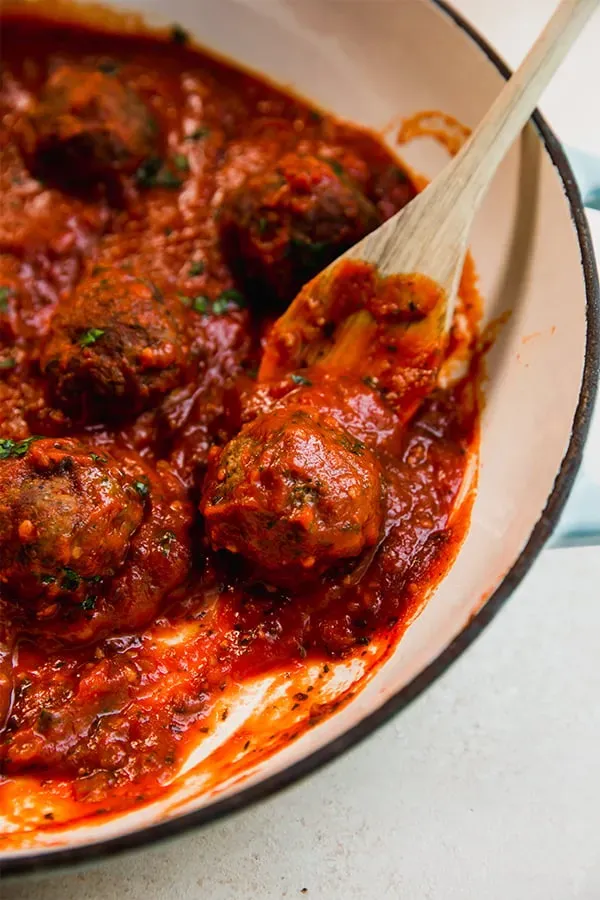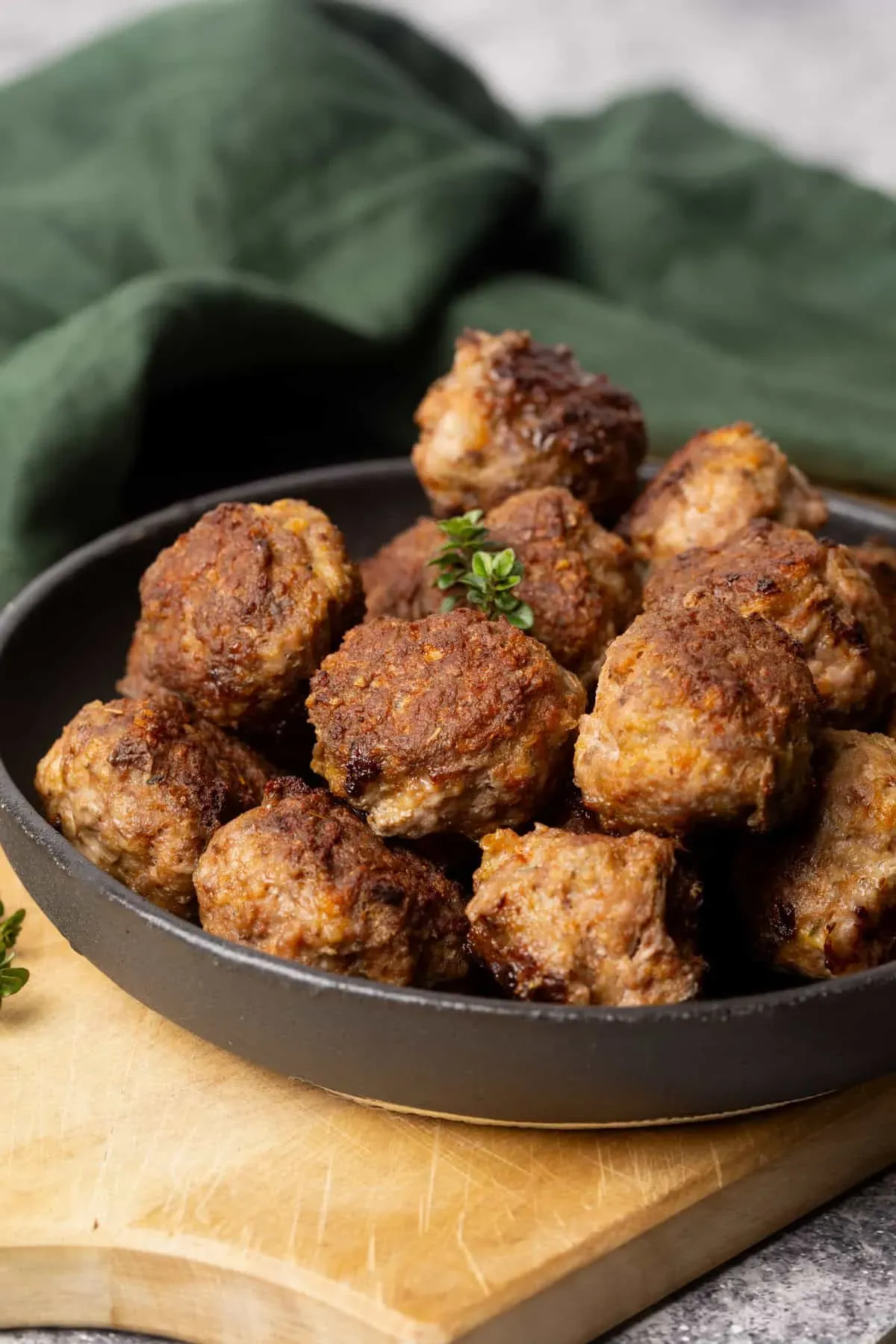Table of Contents
Let's be honest, some meatballs are just...sad. Dry, dense little pucks that make you wonder why you bothered. But imagine something different. Imagine tender, juicy meatballs packed with flavor, simmering in a rich, vibrant tomato sauce. That's the promise of a good italian lamb meatball recipe, and trust me, lamb brings something special to the table. It has a depth of flavor that beef or pork just can't match, giving your meatballs a richness that feels both comforting and a little sophisticated.
Gather Your Ingredients for This Italian Lamb Meatball Recipe

Gather Your Ingredients for This Italian Lamb Meatball Recipe
Alright, so you're ready to tackle this italian lamb meatball recipe. Excellent choice. First things first, you've got to get your ducks in a row on the ingredient front. This isn't complicated, but quality matters here. You'll need about a pound of ground lamb – go for something with a decent fat content, maybe 80/20, for juicy results. Don't skimp on the fresh herbs; parsley and maybe some oregano or basil make a world of difference. Grab some garlic, of course, a good egg to bind things, some breadcrumbs (panko gives a nice texture), a splash of milk or cream, and don't forget salt and pepper. That's the core team for the meatballs themselves before they even hit the sauce.
Mixing and Shaping Your Italian Lamb Meatball Recipe

Mixing and Shaping Your Italian Lamb Meatball Recipe
ingredients gathered? Good. Now comes the fun part, or maybe the slightly messy part, depending on your perspective: mixing and shaping your italian lamb meatball recipe. Dump that ground lamb into a big bowl. Add your soaked breadcrumbs, the egg, that finely minced garlic, chopped herbs, salt, and pepper. Here’s the critical bit: don't go all Hulk on it. Overmixing makes tough meatballs, and nobody wants that. Use your hands (yes, it's the best way) and mix just until everything is combined. Think gentle folding, not kneading dough. Once it's mixed, start shaping. Aim for meatballs roughly the size of a golf ball. They should be firm enough to hold their shape but not packed solid. Uniform size helps them cook evenly, which is a small detail that makes a big difference.
Cooking Methods for Your Italian Lamb Meatball Recipe

Cooking Methods for Your Italian Lamb Meatball Recipe
Searing for Flavor: Pan-Frying Your Meatballs
you've shaped your beautiful little lamb spheres. Now, how to cook them? The classic move for many an italian lamb meatball recipe is pan-frying. This gives you a fantastic crust on the outside, locking in those juices. Heat some olive oil in a large skillet over medium-high heat. Don't crowd the pan; cook them in batches if necessary. You want enough space so they brown, not steam. Turn them gently with tongs every couple of minutes until they're nicely browned on all sides. They won't be cooked through yet, and that's fine. The browning step is all about building flavor and texture before they finish cooking in the sauce.
Hands-Off Approach: Baking Your Meatballs
Maybe you're not feeling the splatter of pan-frying, and that's totally valid. Baking is a solid alternative for your italian lamb meatball recipe, and it's much more hands-off. Preheat your oven to around 400°F (200°C). Line a baking sheet with parchment paper – trust me, cleanup is a breeze this way. Arrange your shaped meatballs on the sheet, leaving a little space between them. Pop them in the oven for about 15-20 minutes. They'll get a nice golden-brown color on the bottom and sides, and they'll be partially cooked through. This method is great if you're making a big batch or just want to avoid standing over the stove flipping things.
Which method is right for you?
- Pan-Frying: Quick browning, intense crust development, requires active attention.
- Baking: Less mess, good for large batches, more even initial cooking, frees you up for sauce duty.
Expert Tips for the Best Lamb Meatballs

Expert Tips for the Best Lamb Meatballs
Making truly great meatballs, especially with an italian lamb meatball recipe, involves a few tricks beyond just mixing stuff in a bowl. First, temperature matters. Keep your meat cold until you're ready to mix; this helps with texture. Don't skip the breadcrumbs soaked in milk or water – it's not just filler, it's crucial for moisture. And seriously, taste your mixture before you shape everything. Cook a tiny bit in a hot pan and adjust the seasoning. It's the only way to know if you've got enough salt and pepper. Finally, resist the urge to overcook them. A meat thermometer is your best friend here; aim for an internal temperature around 160°F (71°C) before they go into the sauce, where they'll finish cooking and soak up all that deliciousness.
Storing, Reheating, and FAQs About Italian Lamb Meatballs

Storing, Reheating, and FAQs About Italian Lamb Meatballs
So you've made a killer batch of italian lamb meatballs. What happens if there are leftovers? (A rare occurrence, but it happens). Storing them properly is key to enjoying them later. Once they've cooled down a bit, tuck them into an airtight container, ideally still nestled in their sauce. They'll hang out happily in the fridge for about 3 days. For longer storage, freezing is your friend. You can freeze them in their sauce or even freeze cooked, sauce-free meatballs on a baking sheet first, then transfer to a freezer bag once solid. This prevents them from sticking together. When you're ready to eat them, thaw overnight in the fridge and gently reheat in the sauce on the stove or in the oven until they're piping hot all the way through. Don't microwave unless you want to risk drying them out – we worked too hard for that!
Wrapping Up Your Lamb Meatball Adventure
So there you have it. You've navigated the ins and outs of crafting truly excellent italian lamb meatballs. No more hockey pucks masquerading as dinner. You've got the know-how to create tender, flavorful bites that soak up that beautiful tomato sauce. Whether you tossed them with pasta, piled them on a hero roll, or just ate them straight from the pot (no judgment here), you made something genuinely good. It’s a simple dish, sure, but getting it right? That feels like a small victory in the kitchen.